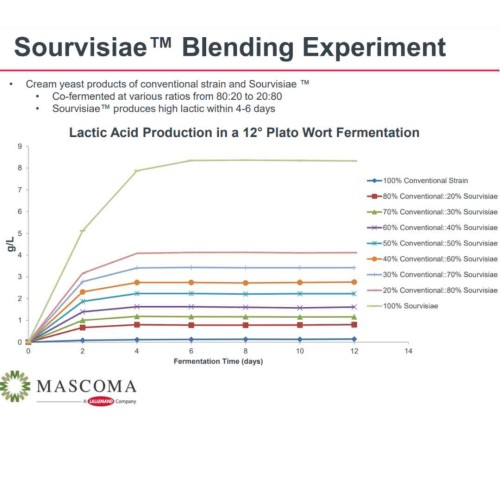Gluten Free Home Brewing Blog
Sour Beers - Never Easier Than Now!
The history of sour beer is long and complex, and is intertwined with past brewing practices. It is generally agreed that brewing beer dates back about 5,000 years. However, what we would consider beer has only existed for the past couple hundred years. There are many websites and books that you can read about when yeast was (knowingly) used in beer production, when and why hops and malt became widely used, the role sour beer played in beer's history, etc.
Sour beer, to some degree, has been present throughout the history of beer until relatively recently. Before the 17th century, yeast and bacteria had not been discovered. Sanitation practices mostly developed after these discoveries. Therefore, many strains of natural yeast and bacteria would find their way into the brewing process. There are other factors as well, but these two factors may be most relevant to this blog: we now know how important sanitation is in brewing; and we now acidify beer by intentionally introducing bacteria during the brewing process.
Ironically, brewing a sour beer has become a bit more difficult, requiring specific knowledge, equipment and expertise. That has changed over the past few years due to the efforts by companies like Mascoma (a company of Lallemond). Their most recent efforts have yielded one of the easiest to understand and use options to date. Launched in 2019, Sourvisiae® produces both alcohol and lactic acid during fermentation within the first five days. It also produces a clean flavor profile without any of the off flavors frequently associated with sour beers.

When used alone, Sourvisiae® will produce a sourness to a degree that is not generally desirable. However, when co-pitched with another beer yeast such as Nottingham, the result is entirely controllable. We obtained the above graph from a powerpoint presentation which illustrates the results of lactic acid production at various co-pitching ratios. This enables the brewer to pitch the ratio of Sourvisiae® and accompanying yeast they want for a specific result. There are other options from Lallemand such as Philly Sour and Sour Pitch, both of which may be the preferred choice of different homebrewers.
For a more in depth understanding of Sourvisiae®, Lallemand hosted "A Fireside Chat about Sourvisiae®" webinar about a year ago. You may skip ahead to 16 minutes when they begin talking specifically about Sourvisiae®. And if you are interested in reading more about the history of yeast, the American Homebrewers Association published a short article called "The Domestication of Beer Yeast".
GFHB is currently developing sour beer recipe kits, and we intent to share the results of our first batch on our blog and newsletter.
Cheers!